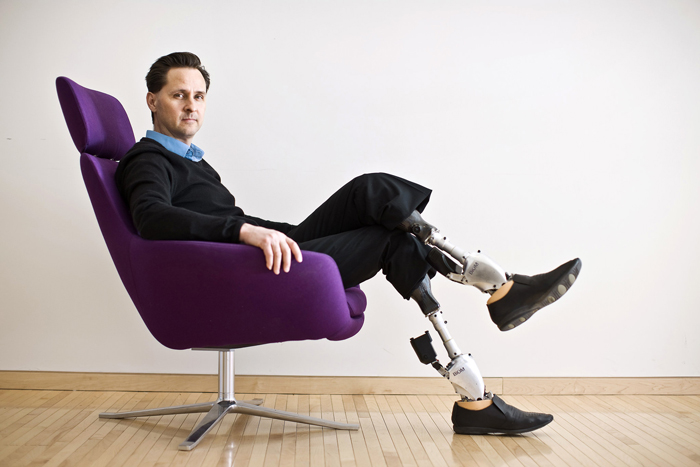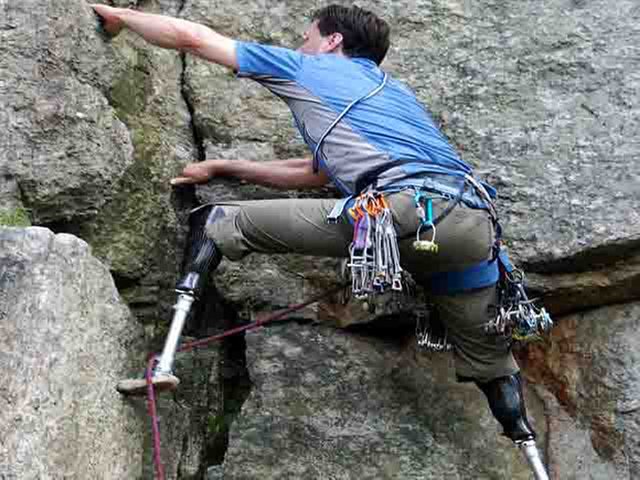An American rock climber, engineer, and biophysicist
BEFORE
A prodigy rock climber, by age eight he had scaled the face of the 11,627-foot Mount Temple in the Canadian Rockies, and by 17 he was acknowledged to be one of the best climbers in the United States. In January 1982, after having ascended a difficult technical ice route in Huntington Ravine on Mount Washington in New Hampshire, Herr and a fellow climber Jeff Batzer were caught in a blizzard and became disoriented, ultimately descending into the Great Gulf where they passed three nights in −29 °C degree temperatures. By the time they were rescued, the climbers had suffered severe frostbite. Both of Herr’s legs had to be amputated below the knees; his companion lost his lower left leg, the toes on his right foot, and the fingers on his right hand.

AFTER:
While a postdoctoral fellow at MIT in biomedical devices, he began working on advanced leg prostheses and orthoses, devices that emulate the functionality of the human leg. Using specialized prostheses that he designed, he created prosthetic feet with high toe stiffness that made it possible to stand on small rock edges the width of a coin, and titanium-spiked feet that assisted him in ascending steep ice walls. He used these prostheses to alter his height to avoid awkward body positions and to grab the hand and foot holds previously out of reach. His height could range from five to eight feet.
As a result of using the prostheses, Herr climbed at a more advanced level than he had before the accident, making him the first person with a major amputation to perform in a sport on par with elite-level, able-bodied persons.
